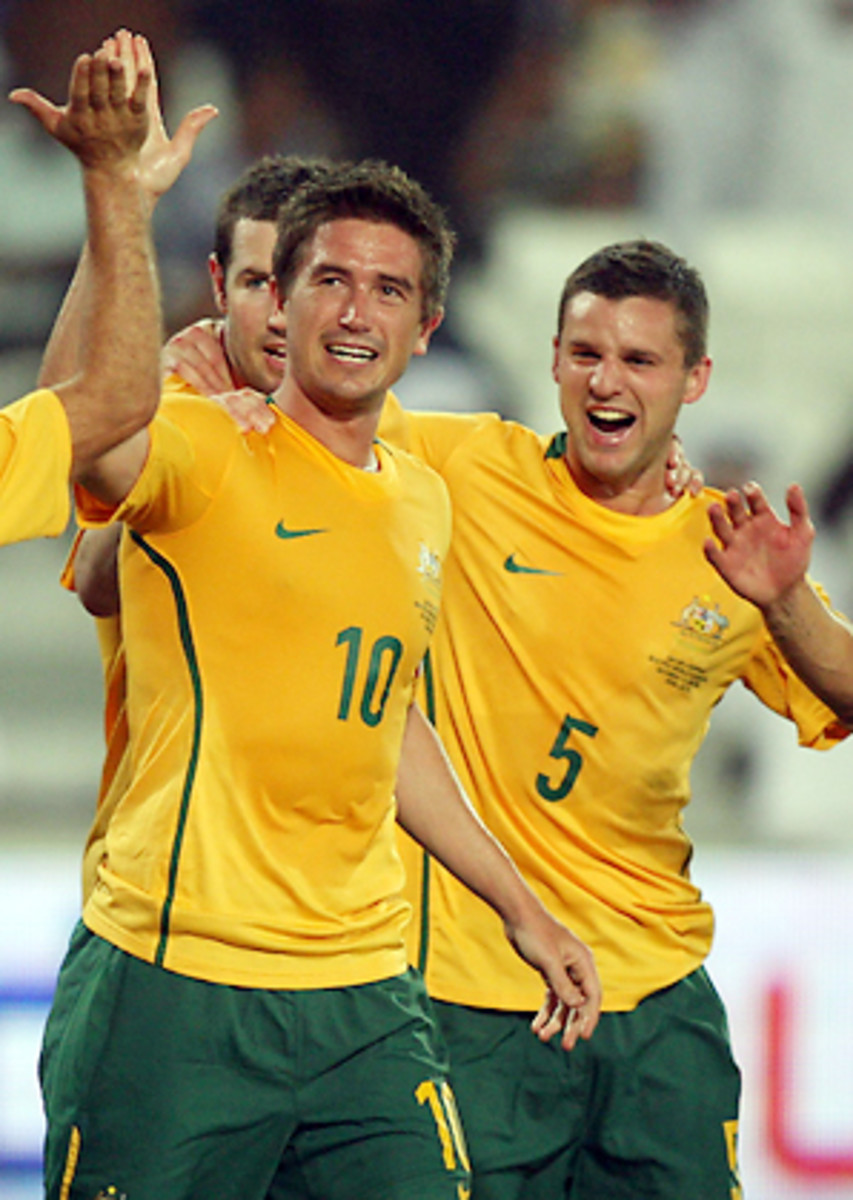Future looks bright for Australia's long-suffering fans of world game
In the same week in late February that the fourth season of Australia's A-League reached its climax with the showpiece Grand Final between the Melbourne Victory and Adelaide United, Football Federation Australia moved offices. The common timing of the two events is not entirely coincidental nor insignificant.
As the gathering fans prepared for the big game -- in the end, a near-capacity 53,000 packed Melbourne's Telstra Dome -- the FFA was settling into its new abode, forced to do so by the galloping momentum of the game's expansion. It needed bigger offices to house more staff, more desks and more computers, so that the administrative needs of soccer's accelerating growth and ambition in the country could be met.
When FFA chairman Frank Lowy and Australian prime minister KevinRudd sat down to the pregame dinner at the Telstra Dome, it is likely that the conversation was not about who was likely to win the Grand Final and why, but about Australia's daring bid to host the World Cup in 2018.
Three months earlier, Rudd had pledged the government's underwriting of the bid to the tune of nearly $30 million, not a risk-free thing to do for a national leader during a global economic downturn. But such are the persuasive powers of Lowy, Australia's richest man, and such is soccer's new reality in Australia that its prime minister, who grew up on rugby in his native state of Queensland, has a razor-sharp understanding of the benefits hosting a soccer World Cup will bring to the country.
It is now more than five years since Lowy, at the invitation of then prime minister John Howard, took over the game's governance and triggered a transformation that has taken soccer from being a broke and pitiful backwater of Australian sport to a serious player; not just on the Australian landscape but increasingly internationally, too.
In that time, the professional A-League was launched, Guus Hiddink was hired to successfully steer the Socceroos into the 2006 World Cup and Australia, thanks largely to a personal accord between Lowy and Asian federation chief Mohamed bin Hammam, was admitted to the Asian Football Confederation.
More recently, Sydney hosted the '08 FIFA Congress (the official launch at the Sydney Opera House had to be seen to be believed), Australia is a serious bidder to stage the '18 World Cup and the clear favorite to host the '15 Asian Cup.
Not bad for a country whose soccer was on the brink of bankruptcy just six years ago, languishing in the pecking order beneath half-a-dozen more popular sports, and so poor that its representative players were asked to pay their own air fares to travel to an international tournament.
The national team remains the primary driver of soccer' growth in popularity in a country that is besotted with its sporting teams and with international sporting success. The pattern set by Hiddink, under whom Australia reached the second phase of the '06 World Cup only to lose to Italy by a last-minute penalty, continues. The Socceroos are galloping towards a berth in next year's World Cup, comfortably leading their group with three games still to play, and two of them at home.
In charge is Pim Verbeek, assistant to Hiddink during his celebrated reign with South Korea, and under whom Australia has won nine and lost just two out of 16 matches since he took over in December '07. Verbeek leads a profoundly Dutch technical revolution, steered by his countrymen in every major technical post: national technical director, national youth coach, technical director of refereeing, as well the national coach and his assistant.
With that regime, affectionately dubbed the "Dutch mafia," it is not just the pointy end of Australia's soccer tree, the Socceroos, receiving attention, but also the greater need to produce quality players for the future. The future looks bright for Australia's long-suffering fans who, until the Lowy-led revolution of '03, bore their affection for the world game almost with embarrassment.
This article originally appeared in the April 2009 issue of World Soccer magazine. To subscribe, click here.






